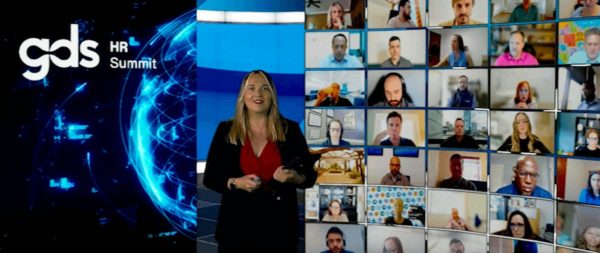We make as many as 35,000 choices per day according to some sources online. Choices like, what time should I leave for work? What should I have for dinner? What am I doing over the weekend? Behavioral economics looks to understand why we make the choices that we do in response to these questions. Why did I choose to leave at 7:45? Why did I order takeout? Why I we choose to go out with friends? If we can better understand why humans select option A over B in these scenarios we can better understand humans in general. This is the hypothesis of behavioral economics.
It’s not difficult then, to see how this model might prove useful when renovating our HR departments. Following the impact of Covid-19, many of the current HR practices we stand by are no longer fit for purpose. As well as this, they’re also based on what Deloitte termed ‘outdated ideas of human psychology and organizational design.’ For Minh Hua – Chief Talent Officer for Stanley Black & Decker – thinking with behavioral economics has become a strategic priority. It was on this topic that Minh spoke at GDS’ recent HR NA summit.
What are Behavioral Economics?
Behavioral economics combines the disciplines of psychology and economics to help us to better calculate human behavior and decision-making. To do so, we look at the psychological, cognitive, emotional, cultural, and social factors likely to influence our thought processes. Where traditional economic theory speaks to what logical people should do, behavioral economics speaks to what sometimes illogical people actually do. Essentially, the theory enables us to rationalize our often irrational thought processes and actions.
However, given that the concept studies the mechanics of thought it’s impossible for us to formulate a prescriptive picture. As Minh put it, “we do not live in a world without things that lead us to think one way or another.” Due to the differences between us in upbringing, gender, finance, we’ll never arrive at a comprehensive view of the mind. In technical terms, what this means is that, “a neutral state architecture does not exist.” However, we don’t need a full model of thought to make active changes to our HR processes, just a baseline. How then can behavioral economics help us to improve the HR function?
Behavioral Economics in HR
As Deloitte identified, behavioral economics provides a powerful set of principles to help us improve the process of motivating teams, driving performance, and hiring and promoting the right people. Behavioral insights and evidence-based practices will be critical when developing the HR division of the future naturally then, behavioral economics will be essential. As such, according to Minh, there are two types of behavioral economics that most relate to HR:
- Choice architecture is about designing the context in which humans make decisions.
- Behavioral architecture is about supporting behaviors that people have chosen to take.
Human resources can only meet its full potential if we carefully consider both architectural approaches when moving forward. To deliver to this objective, Minh suggests that we need to change our thinking around values, data, empathy, and design.
Values
Our values are always changing and, as such, it’s important that we continually review the beliefs we hold, particularly those that have become outdated. As Minh suggests, “somehow, since the 1970’s we developed an implicit belief that it’s better to separate social issues from the workplace.” This isn’t the world we live in anymore and this necessitates a step change.
We’ve been subject to a sea of change in recent years but many of us have failed to take appropriate stock. As Minh stated, “what happened in the last decade? Changing demographics, social media, the MeToo movement, Black Lives Matter, LGBTQ rights, #StopAsianHate, the pandemic. We are in the midst of another fundamental change in how we think about things.
In our work today, “the hard ethical decisions aren’t about right vs wrong, they’re about right vs right.” For this reason it’s important that we incorporate behavioral economic thinking into our HR approach to better align ourselves to our employee’s needs.
Data
It is obvious in 2022, but data effectively serves as the backbone of our organizational plans. However, as Minh suggests, data is often misunderstood to mean numbers and binary facts, but that’s just one type of data. Quant, opinions, and experience are all types of data, and they all matter.”
- Quantitative Data: Quantitative data is defined as the value of data in the form of counts or numbers where each data-set has an unique numerical value associated with it.
- Opinion Data: This will take the form of polls, surveys and any other data source which gives you a direct view into what people are saying.
- Experience Data: This will fall into Voice of the Customer (VoC) and Voice of the Employee (VoE) insights. Naturally, this will what people are experiencing.
As Minh established, “rarely is an answer found in just one type of data.” Consequently, to get the fullest view of our people and the problems they face, we must be even-handed with all data sources.
Empathy
Empathy has risen in importance substantially post-pandemic such that it is now the most important leadership skill according to research. Therefore, it’s important that we incorporate it into our thinking and how we use behavioral economics to inform our processes. As Minh suggested, “empathy is the highest form of knowledge” and we must treat it as such. It’s particularly important that we do so as it’s become easy to lose sight of in the modern organization. Minh concluded his discussion on empathy by stating, “we must look for empathy, because it’s not always apparent.”
Design
When redesigning new processes, systems, or approaches, we must keep our employees front of mind. To aid in this pursuit, Minh offered a useful tip. “Here’s a framework that I really like by Steven Wendel and the acronym is CREATE. It’s a way to analyze how your employees or your audience will receive what you’re trying to do.”
- CUE – the trigger that gets you thinking about taking a specific action
- REACTION – your instinctive first reaction to the idea of taking the action
- EVALUATION – a more rational cost vs benefit analysis of taking the action
- ABILITY CHECK – seeing whether you can even take the action right now
- TIME PRESSURE – determining whether it’s urgent to take the action right now
- EXPERIENCE – the act of taking the action and the feelings that come with it
By altering our thinking around each of the four facets above with behavioral analytics, we can help to establish the HR division of the future. Failure to do so, is to fail your employees.
GDS Summits are tailored 3-day virtual event conferences that bring together business leaders and solution providers to accelerate sales cycles, industry conversations and outcomes. Regarding the HR Digital Summit 88% of Delegates said the overall experience of the Digital Summit they attended was either Above Average or Excellent and 100% of Delegates said the Digital Summit provided them with actionable outcomes to support their current initiatives.
For more, click here to hear from attendees on how GDS has helped them to achieve their business outcomes.
Continue the debate at GDS’ HR Summits where we bring together senior human resources executives who are actively seeking to share, learn, engage, and find the best solutions.













